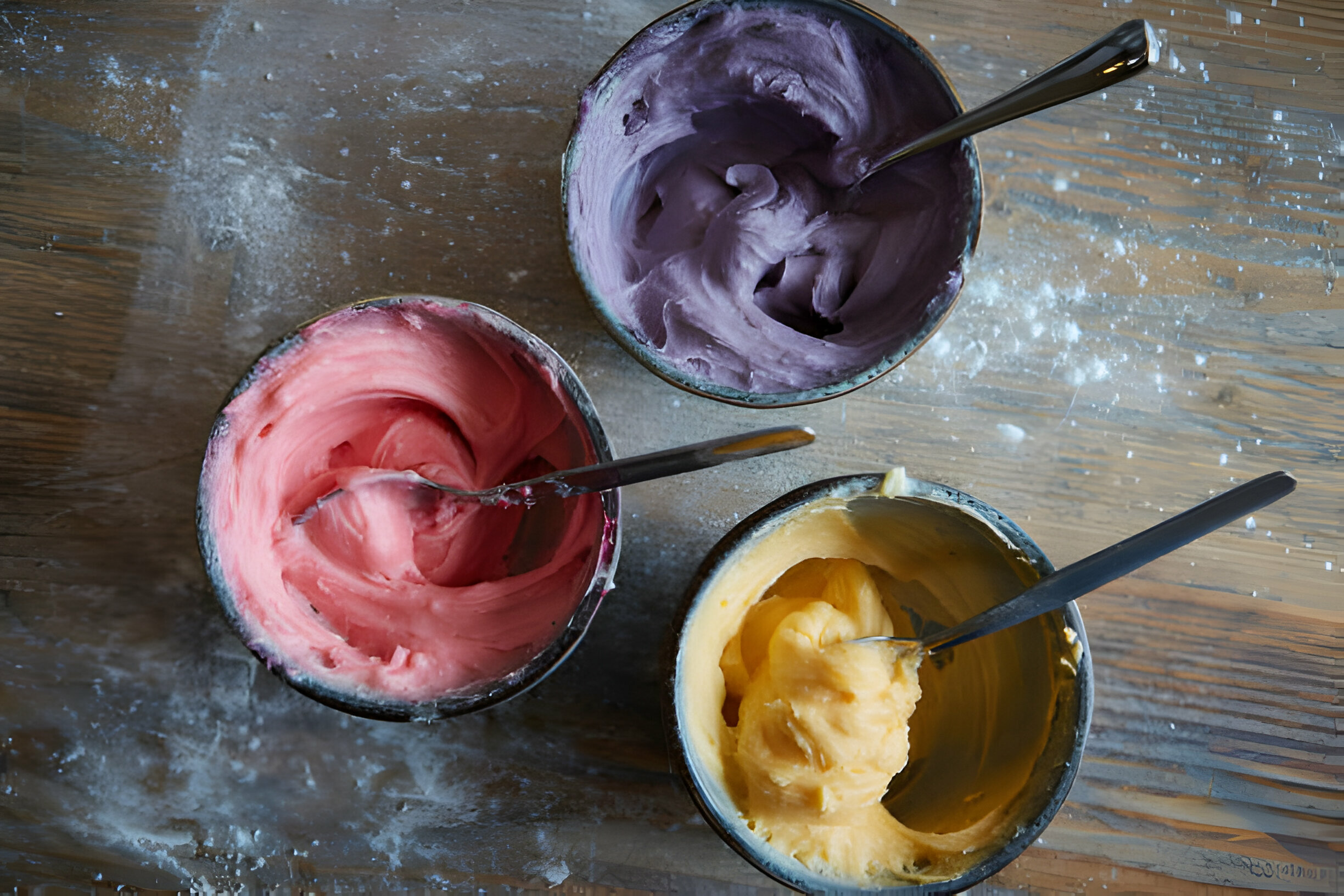What Does Taro Taste Like?
When you explore the rich tastes of global cuisine, some ingredients are super intriguing and versatile. One of such ingredients is Taro. Colocasia esculenta commonly known as Taro is a root vegetable that has been grown for centuries in Asia. But nowadays, it is gaining immense popularity worldwide, especially as a flavoring for bubble tea.
However, still some people are curious to know: what does taro taste like? Well, it is a bit challenging to explain. The taste of taro is complex and hard to describe. It has a starchy, sweet flavor with nutty and vanilla-like notes. The texture of taro is also unique. It becomes creamy and smooth when blended into a paste.
In recent era, taro’s growing popularity is largely due to its use in bubble teas as it pairs perfectly with milk teas and fruit flavors. The sweet nuttiness of taro balances the bitterness of tea for a delicious drink. While many people are enjoying taro flavored bubble teas yet the intriguing taste of the taro root itself remains elusive.
What is Taro?
Taro is a starchy root vegetable that belongs to the Araceae family. It is primarily cultivated in tropical and subtropical regions around the world. Botanically, it is known as Colocasia esculenta and is native to Southeast Asia and the Indian subcontinent. Taro has been a staple food in many cultures for centuries. It is valued for its versatility, nutty flavor, and nutritional value. The taro plant commonly grows in marshy or wetland environments and is characterized by its large, heart-shaped leaves and underground corms which are the edible part of the plant. These corms can vary in size and color depending on the variety, ranging from small to large in size and from white to purple in color.
Taro has a rich cultural significance in many regions around the world. It is often being used in traditional ceremonies and cuisines. It is a key ingredient in various cuisines including soups, stews, stir-fries, and desserts. Additionally, taro can be processed into flour, starch, and even alcoholic beverages for a more complex taste. Due to its dense texture and mild flavor, taro is often compared to other root vegetables like potatoes and sweet potatoes. However, the unique taste profile of taro sets it apart from other vegetables and makes it a beloved ingredient in both savory and sweet dishes across different culinary traditions.
What Does Taro Taste Like?
As explained above, Taro has a very unique taste that is hard to compare to other common foods. It is often described as starchy, sweet, and nutty, with vanilla-like undertones. The starchy flavor comes from the high amounts of complex carbohydrates in taro root. Yet there is also a subtle sweetness similar to vanilla or almond. When taro is mashed or blended into a paste, it develops an incredibly smooth, creamy texture.
This taste profile makes it ideal for using in desserts, drinks, and sauces where a light sweet flavor and velvety mouthfeel are desired. The texture of taro paste is often compared to the smooth, creamy consistency of avocados. It’s a bit thicker than nut milks like almond or coconut milk. The soft, smooth paste easily blends into beverages like the popular taro bubble tea. Taro’s texture also works well in ice cream and contributes creaminess without an overpowering flavor. Whether used in sweet or savory dishes, taro’s signature taste and texture make it a versatile and a great satisfying ingredient.
Health Benefits of Taro
The health benefits of taro make it more than just a tasty addition to your meals. Here’s a rundown of why you might want to consider adding taro to your diet:
- Nutrient-Rich: Taro is packed with essential nutrients which include vitamins, minerals, and dietary fiber. It contains significant amounts of vitamin C, vitamin E, potassium, magnesium, and manganese, among others. These nutrients play crucial roles in supporting overall health and well-being.
- Dietary Fiber: Taro is an excellent source of dietary fiber that makes it important for digestive health. Fiber helps regulate bowel movements, prevent constipation, and promote a healthy gut microbiome. A diet high in fiber is also associated with a reduced risk of chronic diseases such as cardiac disease, diabetes, and certain types of cancer.
- Low in Fat: Taro is naturally low in fat, making it a fantastic flavorful option for those watching their fat intake or trying to maintain a healthy weight. Unlike some other starchy vegetables, taro provides energy without adding excessive amounts of fat to your diet.
- Complex Carbohydrates: The carbohydrates (mainly complex carbohydrates) are present in taro. Complex carbohydrates are digested more slowly than simple carbohydrates. This can help stabilize blood sugar levels and provide sustained energy throughout the day. This makes taro a suitable choice for individuals with diabetes or those looking to manage their blood sugar levels.
- Gluten-Free: Taro is naturally gluten-free so it is a safe and nutritious option for individuals with gluten sensitivities or celiac disease. It can be incorporated into gluten-free diets as a substitute for grains such as wheat, barley, and rye.
- Antioxidant Properties: Taro contains numerous antioxidants, including vitamin C and flavonoids which help protect cells from oxidative damage caused by free radicals. Antioxidants play a key role in reducing inflammation, supporting immune function, and lowering the risk of chronic diseases in the body.
- Potential Blood Pressure Regulation: Some studies suggest that the potassium content in taro may help regulate blood pressure levels. Potassium is known to counteract the effects of sodium in the body. It promotes healthy blood pressure levels and reduces the risk of hypertension and cardiovascular disease.
Taro-Flavored Foods
Taro is commonly used to flavor many popular foods and drinks. Here are some of the most popular taro-flavored items:
Bubble Tea
Bubble tea, also known as boba tea or pearl milk tea, is a drink that originated in Taiwan in the 1980s. Taro is a classic and popular bubble tea flavor which is often blended into a smooth, creamy paste and mixed with milk tea. The taro gives the drink a distinctive nutty, sweet, vanilla-like flavor.
Ice Cream
Taro ice cream has become popular around the world for its bright purple color and sweet, creamy flavor. The taro is blended into a smooth paste that creates a rich and dense texture. Taro ice cream is often topped with fruits, mochi, or sweet syrups for a more delightful experience.
Pastries
Taro is used to flavor many pastries and baked goods like cakes, muffins, breads, and cookies. It adds a lightly sweet, nutty flavor and pretty purple or lavender color. Popular taro pastry flavors include taro cheesecake, taro swiss rolls, and taro macarons.
Savory Dishes
While best known for sweets, taro is also used in savory dishes too. Taro is added to soups, stews, and stir fries in cuisines around the world. It brings a subtle nutty sweetness and starchy texture to balance savory flavors which makes it a versatile ingredient.
Taro Desserts
Taro is a well-liked flavor for sweet desserts and baked goods because of its natural subtle sweetness and smooth, creamy texture when blended into a paste. The purple color also makes it fun and photogenic in ice creams, pastries, and other desserts.
Beyond the taste and appearance, taro has some nutritional benefits that make it a healthier choice over traditional dessert flavors. Taro is a good source of fiber, vitamin C, potassium, and other vitamins and minerals. So you can feel a bit better about indulging in taro desserts. The nutty, vanilla-like flavor of taro combines especially well with coconut, chocolate, fruits, and other sweet mix-ins. Next time you’re looking for a unique dessert, consider choosing something taro-flavored over a more traditional option like chocolate or vanilla.
The Rise of Taro Bubble Tea
Taro bubble tea has gained immense popularity in recent years. This sweet drink originated in Taiwan in the 1980s. Bubble tea combines a tea base mixed with taro flavoring, milk or cream, and chewy tapioca balls or “boba” that you suck up through an extra-large straw. The taro enhances the bubble tea experience nicely by giving these drinks a distinctive nutty, vanilla-like flavor and a beautiful purple hue. The taro is blended into a smooth, creamy paste that perfectly complements the chewy boba pearls. Unlike regular tea, taro bubble tea has a smoothie-like consistency that is thicker and creamier.
One of the appeals of bubble tea is customizing your drink. You can choose the amount of sugar, ice, and toppings. Popular taro bubble tea toppings include boba pearls, fruit jelly, pudding, grass jelly, red beans, coffee jelly, and popping boba that bursts in your mouth. The mix of flavors and textures is what makes it so fun and flavorful to drink! Taro bubble tea is also seen as a healthier alternative to soda as it provides nutrients from the taro root and uses milk or cream instead of corn syrup. The purple color and customizable toppings make taro bubble tea an Instagrammable drink as well.
Taro Recipes to Try at Home
Taro is delicious in sweet drinks and desserts. Here are some tasty taro recipes to try making at home:
Taro Milk Tea
Ingredients:
- 2 cups milk
- 1/4 cup taro powder
- 1 tablespoon honey or sugar
- Ice
Directions:
- In a small bowl, whisk together the taro powder and milk until well blended.
- Add honey or sugar to taste.
- Pour over ice and enjoy!
- 4.Top with tapioca pearls if you want a chewy texture.
Taro Smoothie Bowl
Ingredients:
- 1 frozen banana
- 1 cup frozen mango chunks
- 1/2 cup milk
- 2 tablespoons taro powder
- Toppings like granola, coconut flakes, fruit
Directions:
- Blend banana, mango, milk, and taro powder in a blender.
- Keep blending until smooth.
- Pour into a bowl.
- Top with your favorite toppings to enhance the taste.
Taro Latte
Ingredients:
- 1 cup milk
- 1 shot espresso
- 2 tablespoons taro powder
- Sweetener if desired
Directions:
- Heat milk gently until steaming but not boiling.
- Brew a shot of espresso.
- Whisk taro powder into the milk.
- Pour espresso and steamed taro milk together and enjoy!
Enjoying Taro
Taro is such a versatile flavor that pairs well with both sweet and savory ingredients. Here are some tips for getting the most enjoyment out of taro-flavored foods and drinks:
- Flavor pairings: Try adding taro with other flavors. Taro goes great with fruits like mango, pineapple, strawberry, and lychee. It also complements well with vanilla, chocolate, coconut, and almond flavors. For savory dishes, taro pairs nicely with coconut milk, lemongrass, ginger, and chilies.
- Toppings: Bubble tea shops offer a variety of toppings. You can add boba pearls, popping boba, fruit jelly, pudding, and coconut jelly to complement the taro flavor. At home, try adding fresh fruit, coconut flakes, crushed nuts, or whipped cream.
- Making taro paste: You can make a taro paste. To make taro paste from fresh taro root, peel and cube the taro, then boil until very soft. Drain and mash or blend into a smooth paste. This sweet purple paste can be used in desserts, breads, ice cream, and drinks for a complex and unique flavor.
- Buying taro powder: Taro powder is made from dried and ground taro root and makes it easy to add taro flavor to baked goods. You can look for it in Asian grocery stores or order online and incorporate in your baked items for a nice flavor.
Experimenting with different taro combinations will keep this unique flavor feeling fresh and exciting. The smooth, nutty sweetness pairs so well with both sweet and savory ingredients.
Buying Taro
Fresh taro root is easily available in grocery stores. It can often be found in the produce section of Asian grocery stores or well-stocked supermarkets. Look for taro that feels firm with smooth, brown skin and no spots or blemishes. Taro root should be stored in a cool, dark place and used within a few days.
Taro powder is made from dried and ground taro root and makes baking with taro flavor easier. Taro powder can be found in the baking aisle or Asian section of many grocery stores. It has a very long shelf life when stored properly in an airtight container out of direct sunlight. Popular brands of taro powder include Bob’s Red Mill and Taro Brand. Buying taro powder allows you to conveniently add taro flavor to drinks, desserts, and baked goods to enhance overall flavor profile.
Conclusion
Taro (colocasia esculenta) is a unique and versatile root vegetable that makes for a tasty addition to sweet desserts and drinks. With its nutty, earthy, vanilla-like flavor and smooth, creamy texture when blended, taro works perfectly in everything from ice cream to pastries to the trendy taro bubble tea. The subtly sweet taste plays off chocolate, coconut, fruits, and other flavors. The purple color also makes it fun and photogenic in lattes, smoothies, and more. Taro bubble tea has become especially popular for its customizable flavors and chewy boba pearls. The fiber and nutrient content in taro make it a healthier alternative to soda. If you enjoy creamy and nutty desserts, trying taro in a bubble tea or baked good can be a tasty experience. Taro is a rising star in the world of sweet flavors because of its distinct taste and versatility.
Claire Lower
Claire is LiveandFeel Senior Food Editor. She has a BS in chemistry, a decade of food journalism experience, and a deep love for mayonnaise and MSG. As a Senior Food & Beverage Writer for liveandfeel, where I generate exciting content covering topics such as culinary trends, recipes, and perhaps even health and wellness aspects related to food. that not only informs but also captivates a sizable audience.








